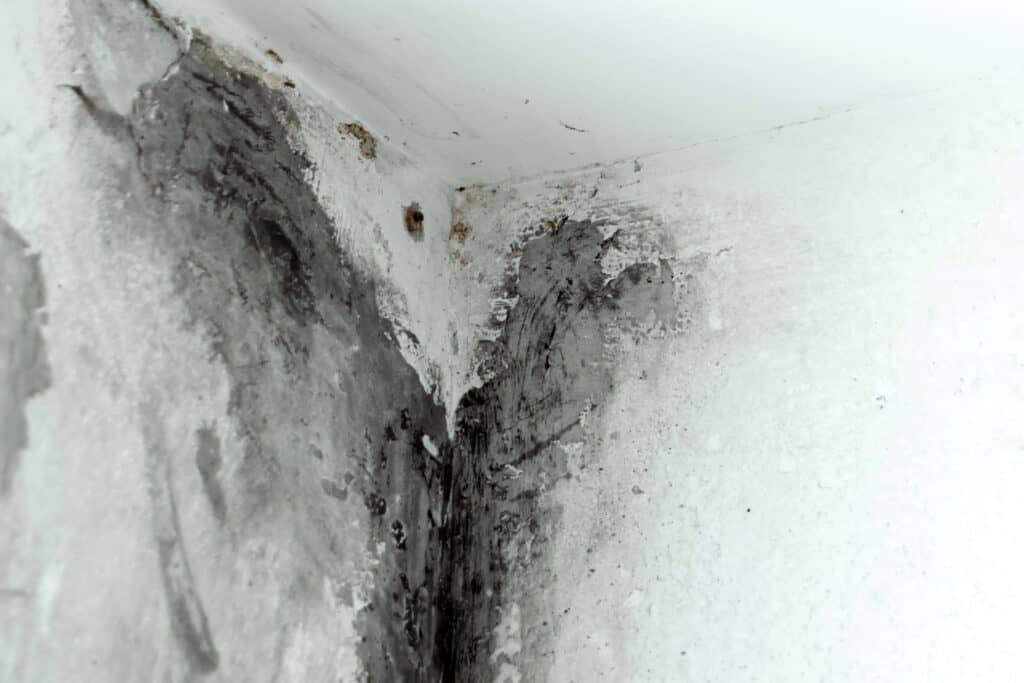What happens at a mould inspection?
Our trained surveyor will visit your premises to identify and evaluate mould growth and moisture issues. They begin with a visual inspection to spot visible mould, water damage, or conditions conducive to mould growth. Utilising specialised equipment like moisture meters and infrared cameras, they detect hidden moisture and mould in walls, ceilings, and other structures. Air and surface samples may be collected to assess the extent of mould contamination and identify mould species through NATA-accredited laboratory analysis. The surveyor may also measure humidity and temperature to evaluate indoor air quality.
Detailed mould testing & inspection report
A comprehensive report, including findings, photographs, and recommendations for remediation, is provided post-inspection, offering a clear insight into the mould problem and suggesting steps to address and prevent further mould growth. Our focus is on finding the source of the mould so that it can be eliminated for good.
Clearance Assessments – Post-remediation mould assessment
After the remediation process, we inspect the premises to verify that all recommendations from the initial mould inspection have been completed.
Our team resamples for surface and airborne mould to ensure complete removal. We will issue a post-remediation clearance certificate once we are confident the issue has been resolved. This step is crucial to ensuring that the remediation efforts have effectively addressed the identified mould issues and that the living or working environment is now safe.
Mould risks
Mould is a health hazard. It produces allergens and irritants, causing various respiratory issues, including nasal congestion, sneezing, coughing, irritation and lung infections. People with Asthma may also find their condition exacerbated by mould exposure, as mould spores can trigger asthma attacks or worsen existing respiratory issues. Mould can also lead to headaches, chronic fatigue, and mood swings.
On a financial note, mould issues can significantly depreciate the value of your property. Mould growth can compromise the structural integrity of buildings as it feeds on organic materials such as wood, eventually causing material decay and damage. This structural damage necessitates costly repairs and poses safety risks to the occupants.
Furthermore, the visual appeal of your property is negatively impacted by mould growth. Unsightly mould stains and discolourations can deter potential buyers or tenants, leading to financial losses in property value and rental income.
Professional Mould Inspection
Don’t take mould lightly. If you suspect signs of mould, take action by contacting Survey Services. We sample, test, and provide recommendations for remediation. Once removed, we will perform a post-remediation assessment, ensuring complete and thorough removal and a healthier home or workplace environment.
Frequently Asked Questions
Which locations are you available for Mould Inspections?
Currently, we provide mould inspections in both metropolitan and remote Perth, Western Australia.
Where does mould come from?
Do you know how this greenish-black slimy substance made it to your building? Mould is a fungus that grows in areas with a lack of ventilation and accumulation of moisture. Be it indoors or outdoors, mould can grow anywhere due to flooding, leaks, and condensation. Identifying and dealing with the cause immediately is the best way to protect people and the premises from harm.
What are the signs of mould sickness?
Individuals exposed to mould may experience various symptoms, commonly called mould sickness. The symptoms often resemble allergic reactions, including sneezing, runny or stuffy nose, itchy eyes, throat or skin, and coughing or wheezing. Some individuals may experience more severe reactions, particularly those with pre-existing respiratory conditions, immune suppression, or mould allergies, which can manifest as shortness of breath, fever, and lung infections. Chronic exposure to certain types of toxic moulds, like black mould, can lead to more severe conditions such as neurological issues, chronic fatigue, and persistent headaches. The array of symptoms can vary widely from person to person, making mould sickness a multifaceted concern that underscores the importance of addressing mould issues promptly.
What are the most common types of mould?
Mould encompasses various species, with common types including Aspergillus, often found on food and in air conditioning systems, causing allergic reactions or respiratory infections. Cladosporium, found on damp materials, triggers allergy symptoms. Penicillium appears on water-damaged materials and induces allergies. Stachybotrys Chartarum, or black mould, produces toxic mycotoxins, causing severe health issues. Lastly, Alternaria, found in damp areas like showers, can cause allergic reactions and exacerbate asthma symptoms. Each type necessitates a specific approach for safe identification and removal.
What is involved in mould remediation?
Mould remediation involves systematically removing and treating mould-contaminated areas to restore a safe and healthy environment. A mould inspection is conducted to identify the extent of mould growth and the affected areas. Following the assessment, containment measures prevent the spread of mould spores to other parts of the property.
The removal process begins by cleaning and treating mouldy materials or discarding severely affected items. Specialised air filtration equipment captures airborne mould spores, and antifungal and antimicrobial treatments are applied to eliminate mould colonies and prevent future growth.
Moisture issues contributing to mould growth, such as leaks or humidity, are addressed to ensure a long-term solution. The area is then carefully cleaned and sanitised, and in some cases, reconstruction of damaged structures may be necessary. Lastly, a post-remediation mould inspection ensures the effectiveness of the treatment and the complete removal of mould.

